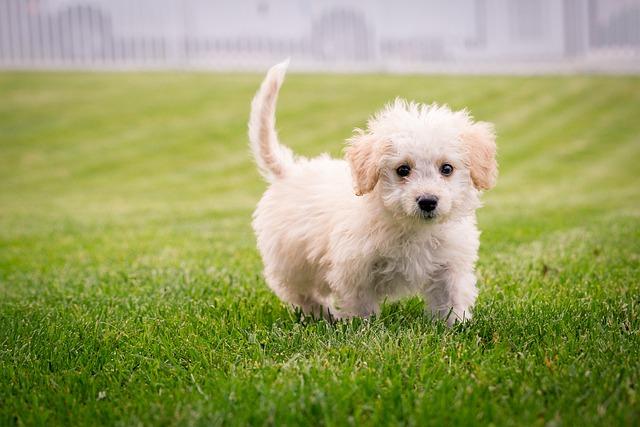Welcoming a new puppy into your home is an exciting and heartwarming experience, filled with wagging tails, playful antics, and endless affection. As you embark on this delightful journey, it’s important to remember that your adorable bundle of fur comes with a responsibility to guide them into becoming a well-mannered and confident companion. Basic positive reinforcement training tools for puppies”>puppy training is the cornerstone of building a strong, positive relationship with your pet, setting the foundation for a lifetime of happiness and harmony. In this article, we’ll explore what you can expect during the early stages of puppy training, offering gentle guidance and practical tips to help you and your new furry friend navigate this rewarding process. Whether you’re a first-time pet parent or a seasoned dog owner, understanding the essentials of puppy training will equip you with the tools needed to foster a loving and respectful bond with your newest family member.
Understanding Your Puppys Learning Curve
Welcoming a new puppy into your home is an exciting adventure, filled with moments of joy and learning for both you and your furry friend. It’s important to remember that each puppy is unique, and their learning curve can vary significantly. Here are a few things to keep in mind as you embark on this journey together:
- Patience is Key: Puppies are naturally curious and eager to explore their surroundings, which means they may not always get things right on the first try. Be patient and consistent with your training efforts, offering positive reinforcement when they follow commands correctly.
- Short, Fun Sessions: Keep training sessions brief and engaging. Puppies have short attention spans, so it’s best to break training into multiple short sessions throughout the day. This approach helps maintain their interest and reinforces learning without overwhelming them.
- Celebrate Small Wins: Every little achievement is a step forward. Whether it’s sitting on command or learning to stay, celebrating these small victories will encourage your puppy to keep trying and learning.
Understanding these aspects of your puppy’s learning process will help you create a nurturing environment where your puppy feels safe and encouraged to learn. Remember, the bond you build during this time is just as important as the training itself.

Creating a Safe and Stimulating Environment
When it comes to welcoming a new puppy into your home, the environment you create is crucial for their growth and happiness. Puppies are naturally curious and full of energy, so it’s essential to design a space that is both safe and engaging. Start by puppy-proofing your home; ensure that electrical cords, small objects, and any hazardous materials are out of reach. Consider using baby gates to restrict access to certain areas and to provide your pup with a secure space to explore.
To stimulate your puppy’s mind and body, fill their environment with a variety of enriching activities. Here are a few ideas to get you started:
- Provide a selection of chew toys and puzzle feeders to keep them entertained and mentally stimulated.
- Incorporate interactive playtime with activities like fetch or hide-and-seek, which can help build their physical skills and confidence.
- Create a cozy resting area with a comfortable bed and some soft blankets, giving them a safe haven to retreat to when they need a nap.
Remember, a well-structured environment not only helps in training your puppy but also in nurturing a trusting and loving bond. By setting up a thoughtful space, you lay the foundation for a joyful and harmonious life together.
Positive Reinforcement Techniques for Lasting Habits
To nurture a well-behaved puppy, it’s essential to employ methods that build positive associations with desired behaviors. By using positive reinforcement, you encourage your puppy to repeat good behaviors while fostering a loving bond. Here are some techniques to help you achieve lasting habits:
- Consistency is Key: Reward your puppy immediately after they perform the desired action. This helps them associate the behavior with the reward.
- Use High-Value Treats: Opt for treats that your puppy finds irresistible. These can be tiny bits of chicken or specially made puppy treats that they only receive during training sessions.
- Verbal Praise and Affection: In addition to treats, use enthusiastic verbal praise and gentle petting to reinforce behaviors. Puppies thrive on affection and will respond positively to your excitement.
- Short, Engaging Sessions: Keep training sessions brief but frequent. Puppies have short attention spans, so aim for multiple five-minute sessions throughout the day.
- Patience and Persistence: Stay patient and avoid showing frustration. Building lasting habits takes time, and your puppy is learning every step of the way.
By consistently applying these strategies, you’re not only teaching your puppy essential life skills but also setting the foundation for a trusting and joyful relationship. Remember, your calm and positive approach is just as important as the rewards you offer.
Addressing Common Challenges with Patience and Love
Training a puppy is a journey filled with both excitement and challenges. As you embark on this path, it’s important to embrace each hurdle with patience and love. Puppies, like children, learn at their own pace and may not always get things right on the first try. Remember, your furry friend is trying to understand the world around them, and your gentle guidance will be crucial in shaping their behavior.
- Consistency is Key: Establish a routine and stick to it. Puppies thrive on consistency, which helps them understand what is expected of them.
- Positive Reinforcement: Reward your puppy with treats, affection, or playtime when they exhibit desired behaviors. This encourages them to repeat those actions.
- Stay Calm: Frustration can arise when training doesn’t go as planned. Take a deep breath and remember that your calm demeanor reassures your puppy.
- Practice Patience: Some commands might take longer to learn than others. Celebrate small victories and remain patient through setbacks.
By focusing on love and patience, you create a nurturing environment that helps your puppy flourish, making the training experience enjoyable for both of you.

